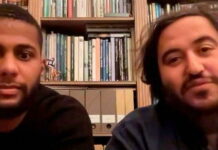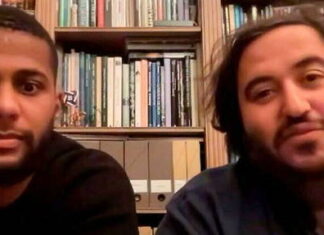They are four. Four watches that look like museum pieces. Four one-of-a-kind works of art seeming to spring straight from the past to bring the world of today to life in the time of Antiquity. Each of these pieces, produced in five copies, bears a gold sculpture at the heart of the dial in a precious setting evoking a great civilization of the past: the Sphinx of Tanis for the Egypt of the pharaohs (2035-1680 BC). ); the Lion of Darius for the Persian Empire (559-330 BC); the Victory of Samothrace for Greece by the successors of Alexander the Great (277-168 BC); the bust of Augustus for Imperial Rome (27 BC-68 AD). Born in the expert hands of exceptionally talented craftsmen, these watches have been produced thanks to an intense collaboration between Vacheron Constantin and the Louvre. Very rare in the media, Louis Ferla, CEO of the Geneva manufacturer, agreed to answer questions from Le Point.
Louis Ferla, CEO of Vacheron Constantin since 2017. © DR
Le Point Montres: Seeing a watch manufacturer like yours and a museum as important as the Louvre collaborate on a project is not obvious. How did the relationship come about?
Louis Ferla: I started talking about this partnership three months after my arrival at Vacheron Constantin, in 2016. Everything was built in a reasoned way and the signing took place in 2019. Because we wanted it to be does something other than business. We wanted it to be a source of inspiration, a sharing of know-how, a preservation of crafts, a creative collaboration. Our manufacture was born in 1755, the Louvre 38 years later, so this partnership is quite young in view of our longevity and our history. But we have so many common values.
How did you work together?
The discussions between the Vacheron Constantin teams and those of the Louvre first focused on the choice of civilizations to highlight. This step alone took a year. But then the selection of the four works was quite quick. Then many drawings were made before starting production. For the start of the technical phases, our design office visited the workshops of the Louvre, located in the basements, while craftsmen from the museum came to the factory. Beyond the artistic collaboration, it was a question of sharing techniques to ensure the preservation of a heritage: the Louvre employs a multitude of small craftsmen, some of whom are reaching the end of their careers and do not necessarily have successors . We have the same problems with our specialists, internal or external, who have gold in their hands. Safeguarding these professions and transmitting this expertise is a priority, for the Louvre as for us.
Have your crafts specialists learned from the Louvre restorers? And reciprocally ?
We always thrive on difference. When we discovered the museum’s restoration workshops, we noticed the efforts made to reconstruct sculptures broken into many pieces using metal elements that had to remain as discreet as possible. The care given to the welds is particularly meticulous, just like in the manufacture when manufacturing certain microscopic parts. In addition to exchanges and apprenticeships in terms of trades and practices, we have provided the artisans of the Louvre with watchmakers’ workbenches on which the working position is more ergonomic. In addition, the manufacture of the dials of the Métiers d’art-Tribute to great civilizations watches gave rise to many prior discussions in order to determine the most suitable techniques for each of the pieces: engraving, champlevé enamel, grisaille enamel, marquetry of stones, etc. For the model incorporating a bust of Augustus, it was decided to set up a micromosaic comprising 660 squares of stone with 0.5 mm sides, a specialty not often used here. It was therefore a question of sharing ideas and skills.
Are the four watches born out of this partnership among the most extreme ever made by your Manufacture?
From a craftsmanship point of view, these are probably the most complicated pieces ever made by Vacheron Constantin, if only because of the number of different skills involved in each model. To illustrate the difficulty, I will admit that the Lion of Darius had to be redone five times, twice for its shape and three times for the patina, before achieving the expected result. On the other hand, the purely horological part was easy to manage, because, despite the sophistication of the mechanism with display by discs, it leaves complete freedom to decorate the dial and we had already experienced it.
Most watchmaking companies are very attached to the notion of innovation. What do you mean by this word?
Vacheron Constantin is constantly innovating in the technical field. We have proven this recently with the Twin Beat, for example, capable of beating at two different frequencies, or with the 57260, the most complicated mechanical watch in the world with its 57 functions. We are also moving forward on an even more ambitious project and we are working on the watches that will be presented in 2030, or even later. On the other hand, in the register of crafts, we are constantly pushing our own limits, like the pieces created with the Louvre. It is by accomplishing exceptional things that we move forward. But keeping one key word in mind: authenticity. Going always further – without ever going too far – while preserving the values rooted in the history of Vacheron Constantin, for us, that is innovation.
Many Vacheron Constantin models are timepieces with complications or craftsmanship. However, one of the most noticed watches at the end of March during the Watches fair
The new 222 is, in my eyes, a good example of correctness. If it faithfully takes the spirit of the 1977 model, we have however worked on it for five years and the current piece is differentiated in a subtle way by the finishes of the case, the date aperture, the bracelet, the color of the dial. For this last point, it was necessary to carry out innumerable tests before obtaining the tonality that we wanted, with a slightly aged aspect. Apparent simplicity, as on the 222 or the Patrimony, is complicated! And it is with the apparently most sober pieces that we have the least room for error. Because the smallest detail is obvious.
You talk about room for error, when you embarked on the Tribute to Great Civilizations project, were you certain to reach the end of your project?
In artistic matters, one is never sure of succeeding. But one of the strengths of Vacheron Constantin is its mastery of numerous skills. And then it’s about trust. This is the basis of failure tolerance. If we do not tolerate failure, there is no creation, no innovation. You have to accept that not everything is perfect immediately. It does not matter, we rework together until we are satisfied. The notion of human adventure is fundamental and constitutes an essential pillar of the Manufacture’s success, today and tomorrow.
The watch industry remains very modest and hates divulging figures. But in a nutshell, how is Vacheron Constantin doing today?
Extremely well. Demand has far outstripped supply, not just for 18 months, but for several years, although we’ve always been tight-lipped about it. We prefer to remain serious, authentic, relevant, creative, without compromising on quality. And as the desirability of Vacheron Constantin increases almost exponentially, we are unable to respond to requests. But we do not ask our customers to have a purchase history to have access to certain models. Or to link the obtaining of an exceptional piece to the acquisition of other watches. Similarly, placing your name on a waiting list does not require you to make a prior payment. Here again, I will speak of a relationship of trust.


















